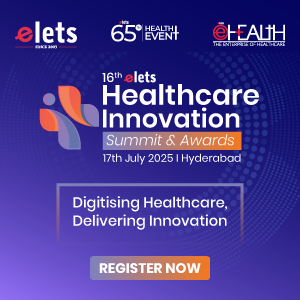Kaiser, Microsoft test medical records technology
 Kaiser Permanente and Microsoft Corp. recently announced a partnership that the two giant companies hope will push forward the effort to digitise medical records and safely transfer sensitive health data.
Kaiser Permanente and Microsoft Corp. recently announced a partnership that the two giant companies hope will push forward the effort to digitise medical records and safely transfer sensitive health data.

Kaiser’s 156,000 employees will be eligible for a pilot program connecting the Oakland health maintenance organisation’s health records with Microsoft’s HealthVault, a free, Web-based medical database the technology giant launched in 2007.

The slow shift of the American health industry to digitised records has been fraught with complications, particularly that hospitals, medical groups and insurance companies typically have closed computer systems that do not allow for the exchange of information.

 Kaiser members already have the ability to schedule appointments, e-mail their doctor, re-fill prescriptions and access test results online through the HMO’s health record, called My Health Manager, which is used by more than 2 million people, or nearly a quarter of Kaiser’s 8.7 million members.
Kaiser members already have the ability to schedule appointments, e-mail their doctor, re-fill prescriptions and access test results online through the HMO’s health record, called My Health Manager, which is used by more than 2 million people, or nearly a quarter of Kaiser’s 8.7 million members.

Kaiser will consider offering HealthVault to its members by the end of the year if the employee pilot, slated to end in the fall, proves successful, Silvestre said.
The Mountain View Internet company has announced collaborative arrangements with the Cleveland Clinic and other providers. Partners previously announced by Microsoft, which is based in Washington, include the Mayo Clinic in Minnesota.
Virtual 3-D human body developed in India

A virtual three-dimension human body capable of replacing cadavers in surgical studies has been developed by a medical graduate in Kerala.
The software, titled ‘3-D Indian,’ developed by Dr Jerome Kalister, has been referred to the Medical Council of India (MCI) for tests and approval.
The software could help surgeons to perform robotic surgery on the brain, heart and liver, pinpointing the precise location of nerves and organ parts.
“The important thing is that cadavers cannot be reused whereas surgical methods can always be learnt through the 3-D virtual body,” Jerome said.
Many uses which cannot be performed on a real body could be used in the 3-D structure to identify the relative orientation, shape, position and texture of the human body with the plenty of options available in the software, he said.
The only objection being raised against the software was that students would not get a ‘feel’ of the human body, but Jerome said: “Skill is not developed by doing cadavers. I do not think students, teachers or anatomists are benefited by the feel.”
The software could also be marketed in certain countries where cadavers were not allowed for medical studies, he said.
InterComponentWare establishes ICW labs

InterComponentWare (ICW) announced today the formation of ICW Labs, a Silicon Valley based R&D organisation focused on deepening ICW’s use of leading technology as part of its eHealth solutions. ICW Labs will be headed by Thomas Odenwald, veteran SAP technology leader and visionary.
The new ICW Lab is chartered with expanding the ICW eHealth solution set, which delivers fully interoperable, secure and reliable communication of medical data and associated information throughout the US. The new organisation will work in tandem with the ICW product management team also located in San Mateo, CA. ICW’s European development teams, operating from company headquarters in Waldorf, Germany, have been very successful in implementing eHealth solutions for all participants in the delivery of healthcare.
At SAP, Odenwald held strategic positions such as founding director of SAP Labs India and was responsible for integrating cutting edge technologies such as open source, Green IT, Semantic Web, RFID and Sensor Networks into the SAP portfolio.
GE revolutionises disease detection by digitisation

GE Healthcare, a division of General Electric Company, and the University of Pittsburgh Medical Center (UPMC) recently announced the formation of a new company called Omnyx, LLC to improve the speed, efficiency of diagnosis and interpretation of lab results.
The new company will bring to the market digital solutions to shape a new age of patient care and apply those solutions to a science that has relied on glass slides and microscopes for over 125 years. Omnyx is the first company in GE’s history to be formed with an academic medical center and represents an aim to accelerate ideas to market through enhanced co-development.
Omnyx’s digital platform will seek to enable clinicians to share images virtually, interpret results using advanced algorithms and reduce costs associated with diagnosis. The benefit to patients could include reducing medical errors, improved turnaround time for lab results and integrating pathology information as part of his or her electronic medical record.
Building on early developments in GE’s Global Research Center, Omnyx will unite UPMC’s pioneering developments in digital pathology with GE’s technology to create a viable solution for high-volume clinical use.
UC Davis combines PET and MRI into one device

Scientists at the University of California, Davis have built the world’s first combined PET-MRI scanner. Positron Emission Tomography (PET) and the Magnetic Resonance Imaging (MRI), the two kinds of body imaging, have been combined for the first time in a single scanner. Both the imaging modalities are logically complementary, as PET is a functional modality that reports about biological processes, while MRI offers information about tissue structure.
The combined scanner can provide accurate PET and MRI images at the same time. It enables the doctors to correlate the structure of a tumour by MRI with the functional information from PET, and to know everything happening inside a tumour. The combined scanners, which are currently available in the market, comprise a combination of Computer-Assisted Tomography (CAT) and PET. MRI scanners depend on strong and smooth magnetic fields that can easily be disturbed by metallic objects inside the scanner.
The researchers used a new technology named the silicon avalanche photodiode detector, in developing the new combined scanner, as the photomultiplier tubes generally used in conventional PET machines are extremely sensitive to magnetic fields.
IBM technology for critical public health info
IBM, in collaboration with the Nuclear Threat Initiative’s (NTI) Global Health and Security Initiative and the Middle East Consortium on Infectious Disease Surveillance (MECIDS), has created a unique technology that standardises the method of sharing health information and automates the analysis of infectious disease outbreaks, in order to help contain diseases and minimise their impact.
The secure, Web-based portal system, the Public Health Information Affinity Domain (PHIAD), is being deployed in the Middle East first, and the partners are pushing for international deployment. With PHIAD, researchers at IBM’s Almaden and Haifa labs have virtually eliminated the time-consuming, tedious tasks common in the public health community by creating an electronic platform that allows them to focus on critical tasks such as detecting emerging public health trends, pinpointing potential outbreaks and performing sophisticated analysis.
The MECIDS project will use SNOMED CT (Systematised Nomenclature of Medicine-Clinical Terms), an international standard that provides a core terminology for electronic health records. The International Health Terminology Standards Development Organisation (IHTSDO) has waived license fees for use of SNOMED CT in this project on humanitarian grounds.
Bartronics’ RFID device to transform patient medication in the US

In a path-breaking initiative that could revolutionise the health care system, Bartronics America Inc., a wholly owned subsidiary of Bartronics India Limited, has successfully implemented its patent winning RFID based wrist band for automating patient medication process.
The Radio Frequency Identification (RFID) based wrist band, the first of its kind to be implemented successfully, assists nurses by automating the process of administering patient medication.
The device was used in a clinical trial involving cancer patients at the Halifax Health Medical Center. 95% of the patients involved in the study found the device easy to use and they were better able to control the pain by using it rather than relying on nurses to provide the pills.
When the patient holds the wristband up to the device, he selects the number on a sliding dial to indicate the pain level, on a scale of 1 to 10. This prompts the MOD to dispense pain medication.
Anoto enables BlackBerry integration to digital pen
Swedish digital pen and paper specialist, Anoto, has partnered with wireless BlackBerry platform developer, PaperIQ, to enable digital pen and paper input to be wirelessly transmitted to the character recognition system. The Anoto Digital Pen Integration Kit for BlackBerry provides users with everything required to integrate Anoto’s digital pen technology with a BlackBerry smartphone application or enterprise system.
The kit enables any existing paper-based forms to be printed with the Anoto pattern, so that they can be used with the digital pen. As the pen records everything the person writes on the dot patterned paper, using Bluetooth technology, the data can be sent wirelessly to the BlackBerry and then transmitted back to the office via the BlackBerry device for further processing without the need to type up notes. The technology has already been piloted at the UK’s Medicals Direct, who carry out health screenings on behalf of life insurance providers, and have used the technology to streamline the processing of half a million screening forms which its nurses complete every year.
An Anoto spokesperson said “The technology has reduced the turnaround time for the forms from seven days to just 24 hours. The system cost in the region of 400,000 over two years to implement – five times less than the tablet PC solution Medical Direct had originally considered. “As it is an out-of-the-box solution that requires little development, the integration kit will make it easier for channel partners and in-house IT departments to create combined BlackBerry and digital pen and paper applications.” 
Be a part of Elets Collaborative Initiatives. Join Us for Upcoming Events and explore business opportunities. Like us on Facebook , connect with us on LinkedIn and follow us on Twitter , Instagram.
"Exciting news! Elets technomedia is now on WhatsApp Channels Subscribe today by clicking the link and stay updated with the latest insights!" Click here!






